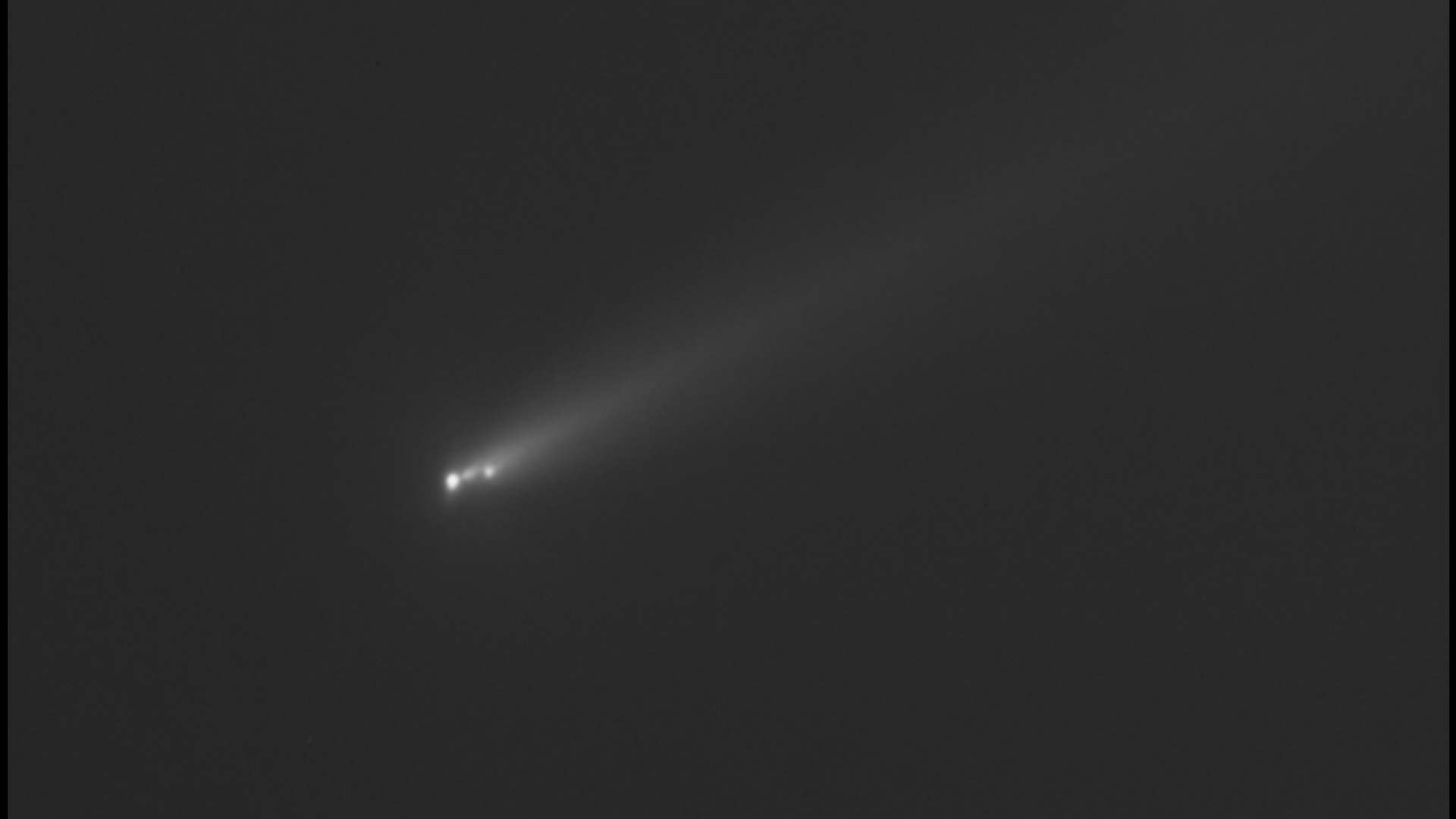New image of 'other comet ATLAS' reveals it's breaking apart ahead of close approach to Earth
New images show that comet C/2025 K1 (ATLAS) has fragmented after passing its closest point to the sun, ahead of its close approach to Earth later this month. This is not the interstellar comet 3I/ATLAS.

The "other" Comet ATLAS has fragmented, transforming into a cloud of debris that's streaming into space, new observations have revealed.
The comet, called C/2025 K1 (ATLAS), was discovered in May by astronomers at the Asteroid Terrestrial-impact Last Alert System (ATLAS) and passed perihelion, or closest point to the sun, on Oct. 8. It has no relation to the famous interstellar comet 3I/ATLAS, other than having been discovered by the same telescope network around the same time.
Initial observations appeared to suggest that Comet K1 survived its passage around our star at a minimum distance of 31 million miles (50 million kilometers), or roughly four times closer than Comet 3I/ATLAS got.
However, new observations taken by astronomer Gianluca Masi in Manciano, Italy, show that the gravitational strain of R1's voyage around the sun was too much for the comet, causing it to fragment into several pieces, or clouds.
"Several parts (sub-nuclei or clouds of debris) are visible, also a plume just below the leading (the first from the left) fragment," Masi, an astronomer at the Astronomical Observatory of Campo Catino and the founder of The Virtual Telescope Project, wrote in an update.
C/2025 K1's disintegration was portended by a sudden brightening event around perihelion, which saw the comet transform from the greenish hue seen in many comets that fly close to our sun (caused by the presence of diatomic carbon fluorescing in sunlight) into a streaking ribbon of gold.
The cause of this transformation is unclear; some scientists speculate that the change in color had something to do with a relative lack of carbon-bearing molecules in the comet's coma (the cloud of ice, gas and dust around the comet's body).
Get the world’s most fascinating discoveries delivered straight to your inbox.

If you want to see the exploded comet for yourself, look in the constellation Leo, where it's shining at magnitude 9.9, according to The Sky Live. (In astronomy, a lower magnitude corresponds to a brighter object; Regulus, the brightest star in Leo, has an apparent magnitude of about 1.35, for example.) Although the comet is still too dim to be seen with the naked eye, it can be spotted with a good telescope or a pair of stargazing binoculars.
Whatever survives of the comet is set to pass closest to Earth on Nov. 25. It will come within about 37 million miles (60 million km), or just under half the average distance between Earth and the sun.

Ben Turner is a U.K. based writer and editor at Live Science. He covers physics and astronomy, tech and climate change. He graduated from University College London with a degree in particle physics before training as a journalist. When he's not writing, Ben enjoys reading literature, playing the guitar and embarrassing himself with chess.
You must confirm your public display name before commenting
Please logout and then login again, you will then be prompted to enter your display name.
